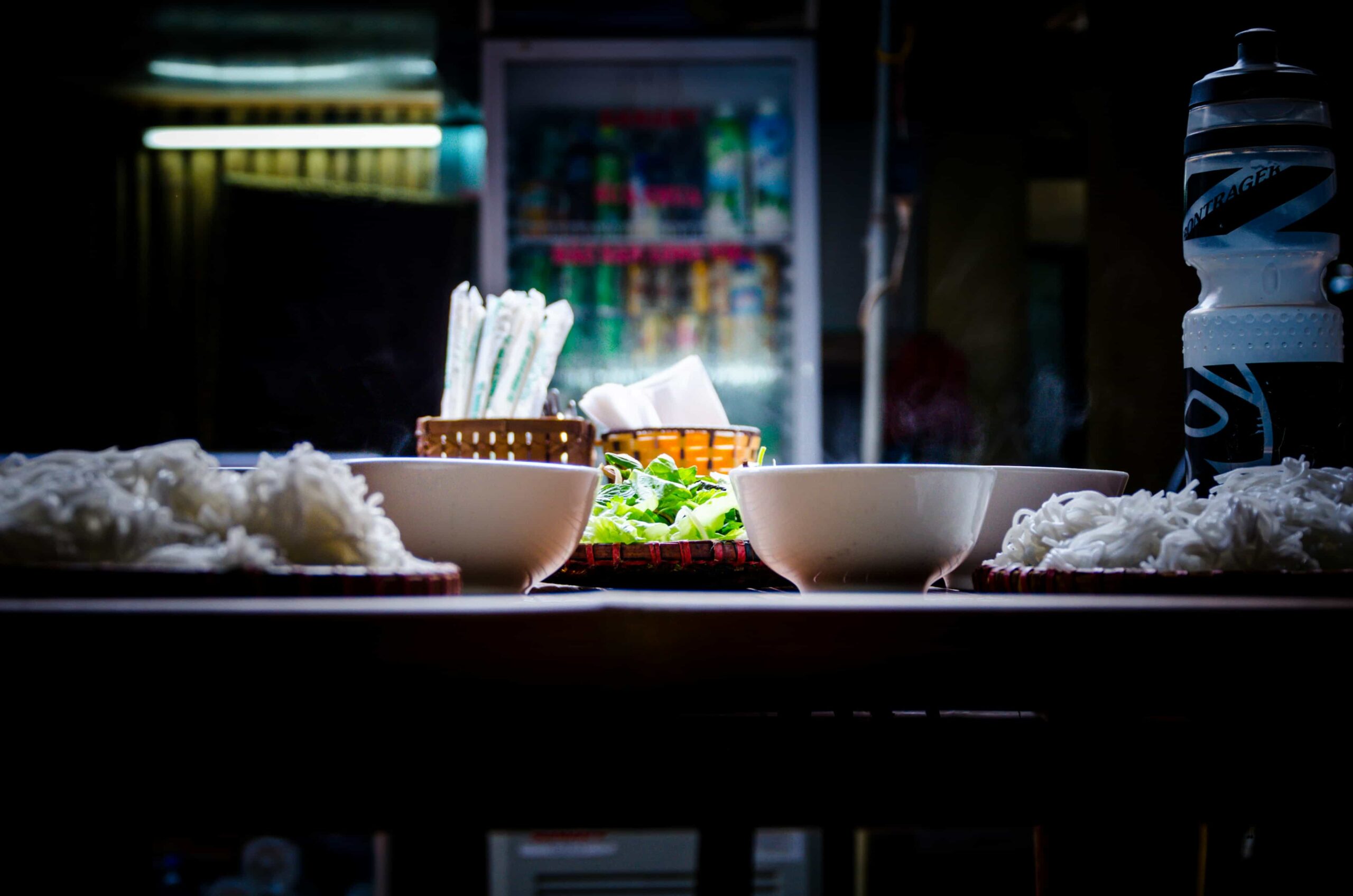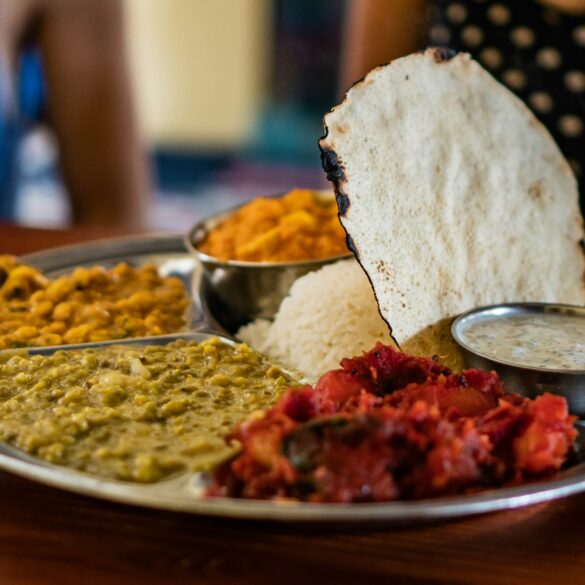How to Make Perfect Pho: Complete Vietnamese Recipe Guide
Walking into a Vietnamese restaurant three years ago, I was completely overwhelmed by the aromatic complexity of pho broth simmering in massive pots. The owner, Mrs. Nguyen, noticed my fascination and invited me into her kitchen—that moment changed everything about how I understood this iconic dish. What struck me most wasn’t just the ingredients, but the patience and respect required to create something truly authentic.
Pho isn’t just soup; it’s a testament to Vietnamese culinary artistry that demands both precision and intuition. Having spent countless hours perfecting my own recipe through trial and error (and quite a few disasters), I’ve come to understand that creating perfect pho is as much about honoring tradition as it is about technique. The depth of flavor comes from time, quality ingredients, and—honestly—a willingness to start over when things don’t turn out right.
Understanding Pho’s Cultural Foundation
Before diving into recipes, we need to appreciate pho’s cultural significance. Originating in Northern Vietnam during the early 20th century, pho represents more than sustenance—it embodies community, tradition, and the Vietnamese approach to balance1. The dish evolved from Chinese and French colonial influences, yet became distinctly Vietnamese through local ingredients and techniques.
Vietnam Food Culture Insight
In Vietnam, pho is primarily consumed for breakfast, not dinner as many Western adaptations suggest. Traditional Vietnamese families often start their day with this nourishing soup, believing it provides sustained energy and promotes digestive health throughout the day.
What fascinates me about pho is how it reflects Vietnamese philosophy of balance—sweet, salty, sour, and umami elements working in harmony. The broth must be clear yet complex, aromatic yet not overwhelming. This balance isn’t just culinary; it’s cultural, representing the Vietnamese approach to life itself2.
The Foundation: Quality Ingredients Matter
I learned this lesson the hard way during my second attempt at pho. Using grocery store beef bones and generic spices, I created something that resembled pho but lacked soul. The difference between good and extraordinary pho lies in ingredient quality—something I now refuse to compromise on.
Authentic pho requires specific ingredients, each serving a crucial purpose in the final product. The bones must be fresh, preferably from a butcher who can provide marrow-rich options. The spices need to be whole, not ground, to maintain their potency during the long cooking process3.
Essential Ingredient Categories
- Beef bones (combination of marrow and knuckle bones)
- Aromatic spices (star anise, cinnamon, cardamom, cloves)
- Fresh aromatics (onions, ginger, garlic)
- Fish sauce and rock sugar for depth
- Rice noodles and quality beef cuts
- Fresh herbs and vegetables for garnish
The beauty of pho lies in its adaptability while maintaining core principles. During winter months, I add extra ginger for warmth; in summer, I increase the fresh herb portions for brightness. This seasonal awareness isn’t just practical—it’s how Vietnamese cooks have approached pho for generations, adjusting to available ingredients while preserving essential characteristics.
Essential Ingredients and Sourcing Strategy
After years of experimenting, I’ve developed a sourcing strategy that balances authenticity with practicality. The key is understanding which ingredients absolutely cannot be substituted and which offer flexibility. This knowledge comes from both research and plenty of mistakes—including one memorable disaster where I tried to use beef bouillon cubes instead of proper bones.
Bone Selection and Preparation
The foundation of exceptional pho starts with bone selection. I typically use a combination of marrow bones and knuckle bones, roughly 3 pounds total for a large batch4. The marrow bones provide richness, while knuckle bones contribute gelatin for that silky mouthfeel authentic pho requires.
| Bone Type | Purpose | Quantity | Source |
|---|---|---|---|
| Marrow Bones | Rich flavor base | 2 lbs | Local butcher |
| Knuckle Bones | Gelatin, body | 1 lb | Asian market |
| Oxtail (optional) | Additional richness | 0.5 lbs | Specialty butcher |
Bone preparation is crucial—I always blanch them first in boiling water for 10 minutes, then rinse thoroughly. This step removes impurities that would otherwise cloud the broth. It’s tedious, but absolutely essential for that crystal-clear broth that characterizes professional pho.
Spice Selection and Toasting
The spice blend is where pho’s magic truly happens. I’ve learned to source whole spices from Vietnamese markets when possible, as they maintain better potency than pre-ground alternatives. The key spices include star anise, cinnamon stick, cardamom pods, cloves, and fennel seeds5.
Toasting spices properly took me months to master. I heat a dry pan over medium heat, then add spices individually based on their toasting requirements. Star anise needs about 2 minutes, cinnamon stick 3-4 minutes, cardamom pods 1-2 minutes. The aroma should be fragrant but not burnt—a fine line that requires attention and practice.
Aromatic Vegetables and Char Technique
Charring onions and ginger creates the smoky depth that distinguishes authentic pho from simplified versions. I use a gas burner to char whole onions and ginger pieces until they’re blackened on the outside. This technique imparts a subtle smokiness that can’t be replicated through other cooking methods.
- Large yellow onions (2-3 pieces, halved)
- Fresh ginger (4-inch piece, sliced lengthwise)
- Garlic head (optional, for added depth)
The charring process requires patience—I hold each piece with tongs directly over the flame, rotating until evenly blackened. The burnt outer layer gets peeled away, revealing the smoky-sweet interior that will flavor the broth for hours.
Fish Sauce and Seasoning Components
Fish sauce quality dramatically impacts the final result. I prefer Red Boat or Three Crabs brands, both offering the complex umami depth that cheaper alternatives lack6. Rock sugar provides subtle sweetness that balances the saltiness—regular granulated sugar works, but rock sugar dissolves more gradually, creating better flavor integration.
Seasoning Ratios for 4 Quarts Broth
- Fish sauce: 1/4 cup (adjust to taste)
- Rock sugar: 2 tablespoons
- Salt: 1 tablespoon (kosher or sea salt)
- White pepper: 1/2 teaspoon
Seasoning pho requires constant tasting and adjustment. I start with these base amounts, then adjust based on the specific characteristics of my ingredients. Some fish sauce brands are saltier than others; bone richness varies; personal preference plays a role. The goal is harmony—no single element should dominate.
Noodle and Protein Selection
Rice noodles for pho require specific width and texture. I use bánh phở noodles, typically the medium-width variety, soaked according to package directions. Fresh noodles from Asian markets offer superior texture, but dried options work well when properly prepared.
For protein, I prefer a combination of raw beef slices and cooked beef. The raw beef (usually eye round or sirloin) gets sliced paper-thin and cooks instantly when the hot broth hits it. Pre-cooked beef brisket or beef balls add textural variety and additional protein options.

Master Broth Preparation Techniques
The broth is where pho lives or dies. I’ve made this mistake countless times—rushing the process, skipping steps, or trying shortcuts that inevitably compromised the final product. After years of refinement, I’ve developed a method that consistently produces restaurant-quality results, though it requires patience and attention to detail.
Initial Preparation and Blanching
Starting with properly blanched bones is non-negotiable. I place all bones in a large pot, cover with cold water, and bring to a rolling boil. The impurities that surface during this process would otherwise cloud the broth permanently. After 10 minutes of boiling, I drain everything and rinse the bones thoroughly under cold water, scrubbing away any remaining blood or residue7.
This step frustrated me initially—it seems like extra work when you’re eager to get started. However, I learned that this preparation phase is actually the foundation of everything that follows. Clean bones produce clean broth, and clean broth showcases the subtle spice and aromatic flavors that make pho special.
Long Simmer Technique
The actual cooking process requires commitment. I return the blanched bones to a clean pot, add fresh cold water (about 4 quarts), and bring to a gentle simmer. The key word here is gentle—vigorous boiling creates emulsification that clouds the broth. I maintain just barely simmering for 2-3 hours before adding any aromatics.
- Blanch bones thoroughly (10 minutes)
- Rinse and scrub bones clean
- Start fresh simmer with cold water
- Maintain gentle simmer for 2-3 hours
- Add charred aromatics and spices
- Continue simmering 3-4 additional hours
- Season and strain final broth
During the initial simmer, I skim foam and impurities that rise to the surface. This isn’t constant work—checking every 30 minutes suffices—but it’s essential for achieving that clear, professional appearance. The broth should smell rich and beefy, but not overwhelmingly so.
Aromatics and Spice Integration
After the initial 2-3 hour simmer, I add the charred onions, ginger, and toasted spice blend. This timing is crucial—adding aromatics too early results in bitter, overcooked flavors; too late and they don’t have time to properly infuse. I wrap the spices in cheesecloth for easy removal, though some cooks prefer letting them float freely.
| Ingredient | When to Add | Cook Time | Notes |
|---|---|---|---|
| Bones | Beginning | 6-8 hours total | Blanch first |
| Aromatics | After 2-3 hours | 3-4 hours | Char before adding |
| Spices | With aromatics | 3-4 hours | Toast before adding |
| Seasonings | Final 30 minutes | 30 minutes | Adjust to taste |
The spice balance took me years to perfect. Too much star anise overwhelms everything else; too little and the broth lacks that distinctive pho character. I use about 3-4 whole star anise pods for 4 quarts of broth, along with one cinnamon stick, 4-5 cardamom pods, 4-5 cloves, and a teaspoon of fennel seeds8.
Final Seasoning and Straining
The final seasoning phase requires careful attention and constant tasting. I add fish sauce gradually, starting with less than I think I need. The salt and sweetness should complement each other without either dominating. Rock sugar dissolves slowly, so I add it early in this process to allow proper integration.
Professional Straining Technique
Use a fine-mesh strainer lined with cheesecloth for the clearest possible broth. Strain twice if necessary—the effort shows in the final presentation. Never press solids through the strainer; let gravity do the work for crystal-clear results.
Straining requires patience and the right equipment. I use a large fine-mesh strainer lined with cheesecloth, working in batches to avoid overwhelming the filter. The goal is crystal-clear broth that showcases the beautiful amber color developed during the long cooking process.
Assembly and Serving Excellence
Assembly is where technique meets artistry. I’ve seen perfectly good pho ruined by careless assembly—overcooked noodles, improperly sliced beef, or inadequate broth temperature. The serving process should be efficient and precise, much like the preparation that preceded it.
Noodle Preparation and Timing
Rice noodles require specific timing and technique. I soak dried noodles in warm water until pliable, then finish cooking them in boiling water for 1-2 minutes maximum. Overcooked noodles become mushy and break apart when the hot broth hits them. Fresh noodles need even less time—just a quick dip in boiling water to warm them.
For service, I portion cooked noodles into individual bowls immediately after cooking. They should be hot but not continuing to cook. This timing coordination becomes second nature with practice, but initially requires careful attention to avoid serving lukewarm pho.
Beef Slicing and Preparation
Raw beef slicing is an art form that dramatically impacts the eating experience. I partially freeze the beef (eye round or sirloin) for 30 minutes to firm it up, then slice against the grain as thinly as possible. Paper-thin slices cook instantly in the hot broth; thicker slices remain tough and chewy9.
The slicing technique requires a sharp knife and steady hands. I hold the beef firmly and slice in one smooth motion, maintaining consistent thickness throughout. It’s worth practicing this technique—the difference between properly sliced and poorly sliced beef is immediately apparent in the final dish.
Regional Variations and Adaptations
Understanding regional pho variations has deepened my appreciation for this dish’s complexity. Northern pho (pho bac) tends to be more subtle, with fewer garnishes and a cleaner flavor profile. Southern pho (pho nam) incorporates more herbs, bean sprouts, and often includes a touch of sweetness that reflects the region’s agricultural abundance10.
Northern vs. Southern Styles
My first taste of authentic Northern-style pho surprised me with its restraint. The broth was clear and focused, served with minimal garnishes—just a few herbs and lime wedges. This simplicity allows the broth quality to shine through without distraction. Southern style, by contrast, arrives with a plate of fresh herbs, bean sprouts, jalapeños, and lime, encouraging customization.
I’ve learned to appreciate both approaches. Northern style showcases broth-making skill and ingredient quality, while Southern style celebrates the interactive, customizable nature of the dish. Neither is superior—they represent different philosophies about food and community.
Dietary Adaptations and Alternatives
Adapting pho for different dietary needs requires creativity while maintaining the dish’s essential character. I’ve developed several variations that honor the original while accommodating various restrictions and preferences.
Vegetarian and Vegan Adaptations
Creating vegetarian pho challenged me to think differently about umami development. Without beef bones, I rely on mushrooms, seaweed, and vegetables to build depth. Shiitake mushrooms provide substantial umami, while kombu adds oceanic richness. The key is layering these flavors over time, much like the traditional approach11.
- Mushroom broth base (shiitake, portobello, cremini)
- Kombu seaweed for umami depth
- Roasted vegetables for complexity
- Tamari or soy sauce instead of fish sauce
- Tofu or seitan for protein
The vegetarian version requires longer cooking time for the mushrooms to release their full flavor potential. I simmer the vegetable broth for 3-4 hours, using the same spice blend and aromatics as the traditional version. The result isn’t identical to beef pho, but it’s delicious in its own right.
Gluten-Free Considerations
Pho is naturally gluten-free when made with rice noodles and quality fish sauce. However, some fish sauce brands contain wheat, so label checking is essential. I always verify that my spices haven’t been processed in facilities that handle wheat, particularly when buying from bulk bins.
| Ingredient | Gluten Status | Alternatives | Notes |
|---|---|---|---|
| Rice noodles | Naturally GF | None needed | Verify brand |
| Fish sauce | Usually GF | Coconut aminos | Check label |
| Spices | Usually GF | Certified GF spices | Cross-contamination risk |
Common Issues and Solutions
After years of making pho, I’ve encountered virtually every possible problem. Most issues stem from rushing the process or skipping fundamental steps. Here’s what I’ve learned from my mistakes—and how to avoid them.
Cloudy Broth Solutions
Cloudy broth is the most common problem I see with home cooks. It’s almost always caused by boiling too vigorously or skipping the blanching step. Once the broth is cloudy, it’s difficult to fix completely, though gentle simmering with egg whites can help clarify slightly12.
Prevention Strategies
- Always blanch bones thoroughly
- Maintain gentle simmer, never rolling boil
- Skim foam regularly during first 2 hours
- Start with cold water, not hot
Seasoning Balance Issues
Overseasoning is easier to prevent than fix. I always start with less seasoning than I think I need, then adjust gradually. Fish sauce can be added throughout the process, but it’s nearly impossible to remove once added. The same applies to salt and sugar—conservative initial amounts with gradual adjustment yield better results.
Conclusion and Final Thoughts
Making perfect pho isn’t just about following a recipe—it’s about understanding the principles behind each step and developing your own relationship with the process. After years of refinement, I still learn something new each time I make it. The dish teaches patience, attention to detail, and respect for tradition while allowing room for personal expression.
What continues to amaze me is how this seemingly simple soup represents such complex flavors and techniques. Each bowl tells a story of careful preparation, quality ingredients, and cultural heritage. Whether you’re making your first pot or your hundredth, approach pho with respect for its origins and patience for the process.
References



